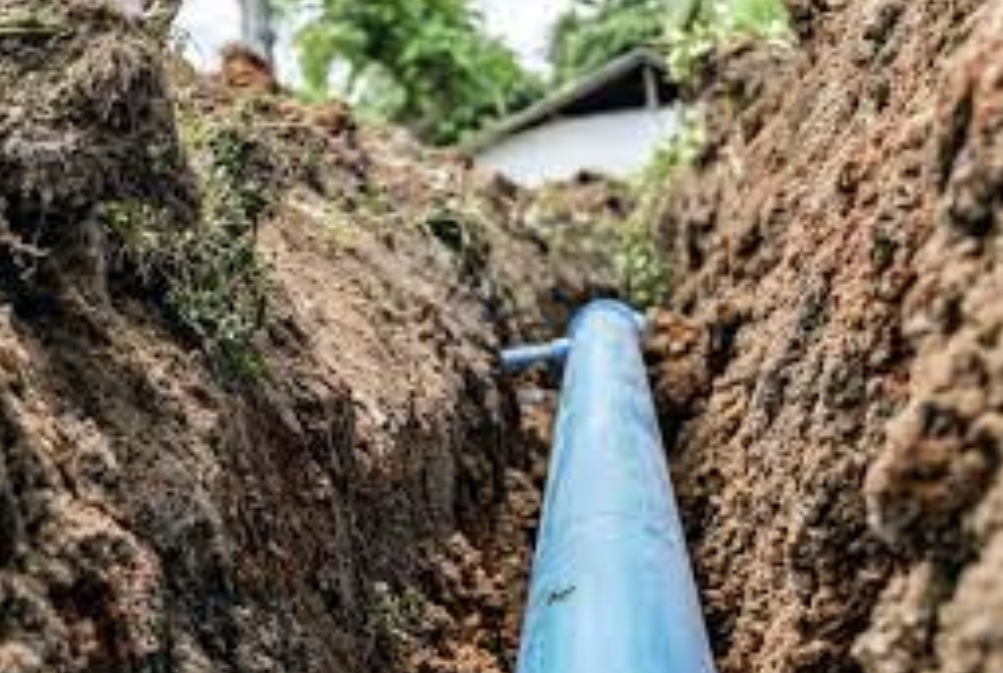
New Domestic Water Service Line Repair or Replacement involves replacing or repairing the main water line that supplies water to your home from the municipal supply or a well. Over time, water lines can degrade, leak, or fail due to age, damage, or wear, and repairing or replacing them can prevent further damage, water loss, or contamination.
⚠️ When You Might Need Water Line Repair or Replacement:
-
Low Water Pressure: If you’re experiencing consistently low water pressure, it could indicate a leak or obstruction in the service line.
-
Water Discoloration: Brown or rusty water may be a sign of corroded pipes, which is especially common in older homes with galvanized steel or cast iron pipes.
-
Water Pooling: Unexpected puddles or wet spots in your yard can indicate a broken or leaking pipe.
-
Higher Water Bills: A sudden increase in water bills without a corresponding increase in usage can indicate an underground leak.
-
Unusual Noises: If you hear gurgling or bubbling sounds from your pipes, it could be due to a leak or air trapped in the water line.
-
Old Pipes: Older homes may have outdated pipes like galvanized steel or lead, which are prone to corrosion, leaks, or contamination.
🛠️ Water Line Repair or Replacement Process:
1. Inspection & Diagnosis:
-
Camera Inspection: A plumber may use a sewer camera to inspect the pipe and pinpoint the issue—whether it’s a leak, blockage, or corrosion.
-
Pressure Testing: They may test water pressure to identify any loss or irregularities in the system.
2. Traditional Excavation (Trenching):
-
How it works: A trench is dug to expose the water line, and any damaged or deteriorating sections of the pipe are replaced.
-
Best for: Older homes with severe pipe issues, or when the water line is easily accessible.
-
Pros: Direct and clear approach to replacing the pipe.
-
Cons: Can be disruptive (yard or driveway excavation) and time-consuming, especially if the pipe is deeply buried.
3. Trenchless Pipe Replacement (No-Dig Technology):
-
How it works: This method involves pulling a new pipe through the old one or inserting a liner inside the existing pipe to restore its function.
-
Best for: Minimal disruption, especially for pipes located under driveways, landscaping, or paved areas.
-
Pros: Less invasive, quicker, and typically less expensive than traditional excavation.
-
Cons: May not be possible for every type of pipe or damage.
4. Repairs vs. Full Replacement:
-
Repair: If the problem is localized (a small leak or crack), a simple repair may be sufficient. A plumber will cut out and replace the damaged section of the pipe.
-
Replacement: For older pipes that are corroded, cracked, or severely damaged throughout the length of the line, full replacement may be necessary to prevent further problems.
📝 Things to Consider Before Moving Forward:
-
Choose the Right Pipe Material:
-
Copper: Durable and long-lasting, but more expensive.
-
PVC: Affordable, flexible, and resistant to corrosion.
-
PEX: Flexible, quick to install, and less likely to burst in freezing temperatures.
-
-
Consider Trenchless Technology: If you’re concerned about damage to your yard, driveway, or landscaping, trenchless methods can save you the headache of extensive digging.
-
Permits & Codes: Depending on your area, replacing a water service line may require permits and inspections. Make sure your plumber is familiar with local regulations.
-
Water Conservation: Older pipes can be leaky and waste water. A new, properly installed pipe can help conserve water and reduce your bills.
-
Future Proofing: If you plan on staying in the home long-term, consider replacing the line with a high-quality material that will last for decades, like copper or cross-linked polyethylene (PEX).
✅ When to Call a Professional:
-
If you’re experiencing any of the warning signs mentioned (low pressure, discoloration, etc.).
-
If you’re unsure about the age or material of your water service line and want to avoid potential issues down the road.
-
If you’re remodeling or planning to upgrade your plumbing system.